Zenith’s most attention-grabbing release of 2021 was the Chronomaster Sport, whose revolutionary 1/10th-second chronograph display is intended to lead the El Primero-equipped series into the future. In this feature from the WatchTime archives, I give it a test drive.
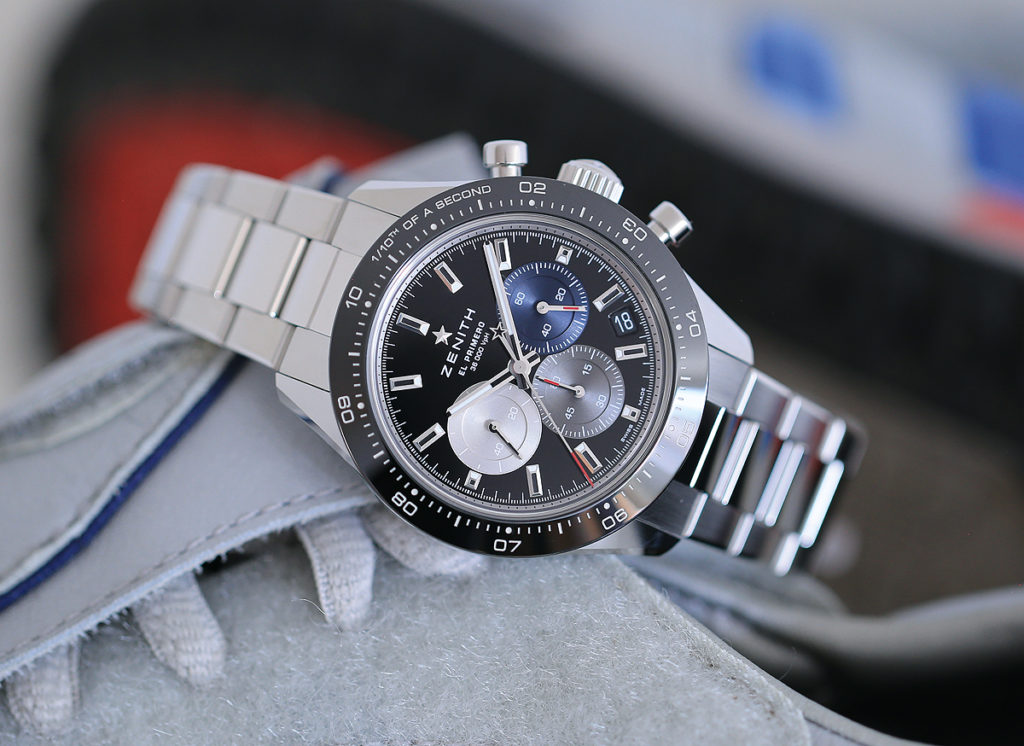
Zenith has always been all about pushing the boundaries of mechanical timekeeping precision. The Le Locle-based manufacture still holds the world record for chronometry Observatory Prizes, at 1,565. In 1969, Zenith made history with the introduction of the original El Primero caliber, which was notable for, among other aspects, its uncommonly high frequency of 36,600 vph (5 Hz), which in practical terms meant that its integrated chronograph could record elapsed times not just to the second but to the 1/10th second. The El Primero would become the cornerstone upon which Zenith would build its modern brand for many years to come. In most watches that housed this now-famous movement, however, the dial was not designed to actually record these minuscule measurements in an easily legible way. This year, Zenith remedied that with the introduction of the Chronomaster Sport series, which houses the most recent, most optimized version of the El Primero and introduces an ultra-readable ceramic bezel with an etched, graduated 1/10th-second display.
The Chronomaster Sport marks, according to Zenith, “a new era for the quintessential Zenith sporty-chic chronograph,” the El Primero-equipped Chronomaster, whose other recent variations have included more retro-influenced models like the Chronomaster Revival Manufacture Edition and Chronomaster A385 Revival. The new model bears some of those models’ vintage influences: its sleek, 41-mm steel case features the pump-style chronograph pushers of earlier models, and the tricompax dial (in either matte black, as on our review model, or matte white) hosts a set of overlapping subdials in the classic El Primero colors of blue, anthracite, and light gray, just as they appeared on the classic A386 model from 1969. The case boasts an appealing array of satin-brushed and mirror-polished finishes on its curves and facets, all the more prominent on the bracelet-mounted version of the watch I reviewed, where that variety of shiny and matte surfaces continues seamlessly from lugs to links.
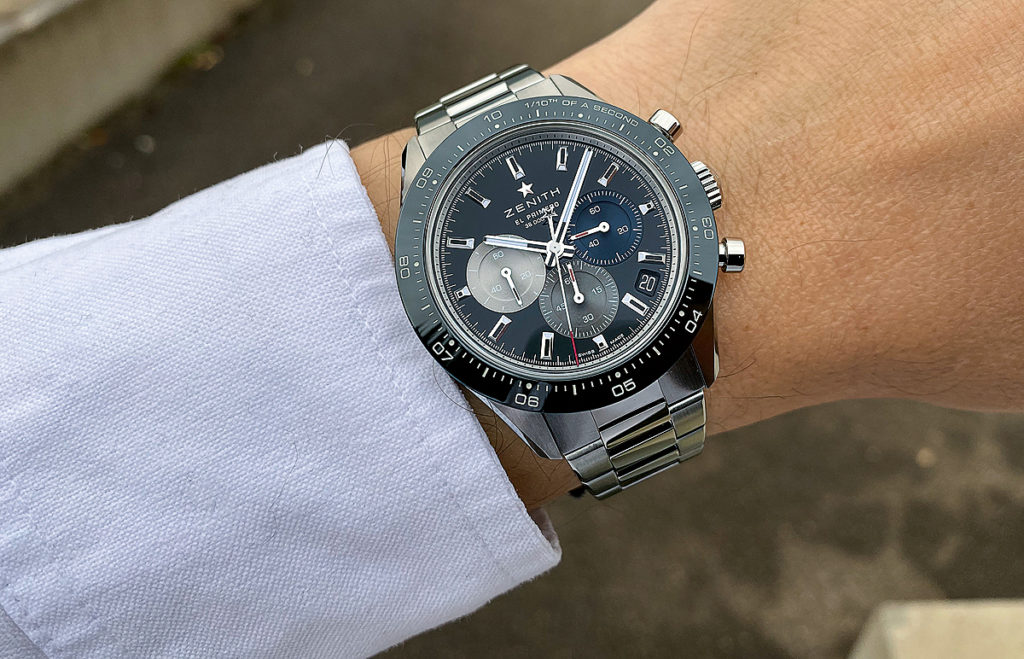
The pushers take just a modicum of pressure from a fingertip to activate, engaging with a light metallic click. In between these pushers, with their slightly rounded and polished heads, is the fluted, two-position crown with a relief Zenith star emblem in its center. The crown is relatively small and set tight to the case, which is aesthetically pleasing but from a utility standpoint makes it a bit difficult for fingers to grip and turn. Definitively modern in contrast to all the watch’s historical details is the polished black ceramic bezel, with its white-etched scale for recording 1/10th-second timing intervals, which debuts on this new watch and imparts a substantial portion of its “Sport” character. A close look at the etched bezel reveals the subtle alternations in the orientation of the numerals on the scale in the service of legibility.
Drilling down on the black lacquered dial’s details, most all of the classical Chronomaster El Primero elements are present: the rhodium-plated, faceted block indexes, compressed at the 3, 6 and 9 o’clock positions to accommodate the subdials; a rounded-edge rectangular window at 4:30 for the date display, with a date numeral in white on a black field; and the aforementioned, recessed subdials, which gently overlap each other’s edges and are finished with a snailed texture that is scarcely visible except under a loupe. The rhodiumed, partially openworked hands have a strip of Super-LumiNova on their tips and the seconds hand (actually, “1/10th seconds hand” might be more accurate) features a star-shaped counterweight and a red tip.
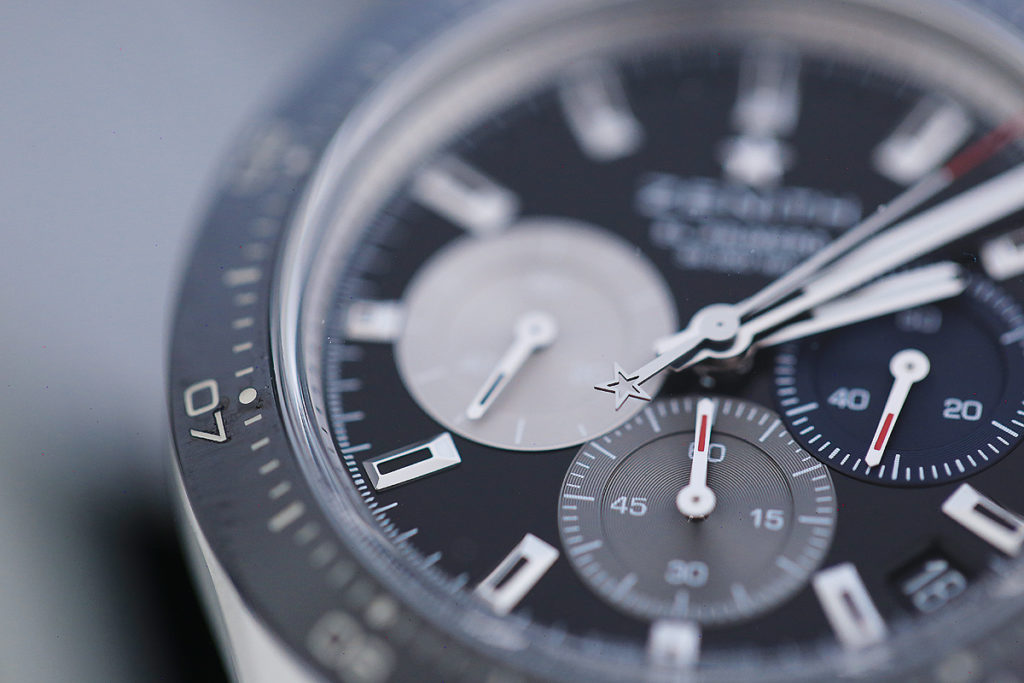
As stated above, however, the central hand and subdials serve a slightly different array of tasks than they do on “standard” El Primero chronograph watches. Pressing the top pusher sends the central red-tipped counter into lightning-quick action, sweeping around the dial and the ceramic bezel’s scale in 10 seconds rather than 60. Simultaneously with the central hand completing its sixth orbit around the dial, the smaller hand on the 3 o’clock subdial, customarily the display for elapsed minutes, makes one complete rotation around that subdial’s white-printed 60-second scale in one minute, while the hand on the 6 o’clock subdial, traditionally used to tally elapsed hours, moves to the first index on its 60-minute scale. I defy any wearer not to find him- or herself transfixed by the dynamic motion of the speeding central hand after activating the chronograph. The benefit here, of course, is that pressing the top pusher again will halt all the hands at once and enable the wearer to read stopped times not just to the second but to the 1/10th second, a particularly useful element in the timing of sporting events.
What has been sacrificed from previous Chronomasters to bring this avant-garde functionality to the forefront? Well, the 1/10th-second scale supplants the tachymeter scale found on some predecessors, so you can’t use it to calculate speeds based on distance. And you can’t time events with the stopwatch that last longer than one hour (as opposed to the 12-hour intervals attainable on other models). All in all, those who truly miss these functions are likely to be few, and in any case Zenith offers a slew of existing models for them already.
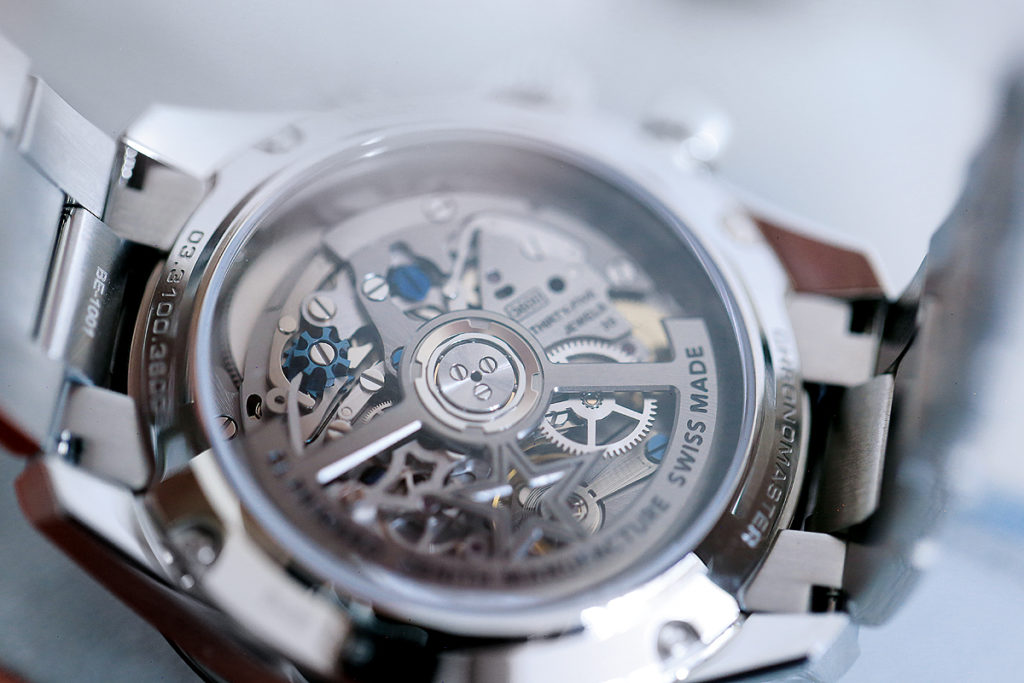
The new micromechanical engine at the heart of these advancements is Caliber 3600, the latest evolution of the half-century-old El Primero — built upon its most recent predecessors, Caliber 400 and its successor, Caliber 400B, and incorporating a number of enhancements, many of them subtle but substantial. Zenith’s team has used modern technologies to decrease the total number of components while managing to increase the power reserve. (To be more precise, the 311 parts in Caliber 3600 are more than the 278 parts of the base Caliber 400, but fewer than the 328 of Caliber 400B, which added elements to move the date position from 4:30 to 6:00.)
Assembly of each caliber has been optimized, with fewer varieties in the types of small components like screws, jewels and studs. The pieces that comprise the calendar function are the same, but the most prominent one, the date disk, has been optimized to offer more types of customization and decoration. A stop-seconds function and inverted crown sequence have been added.
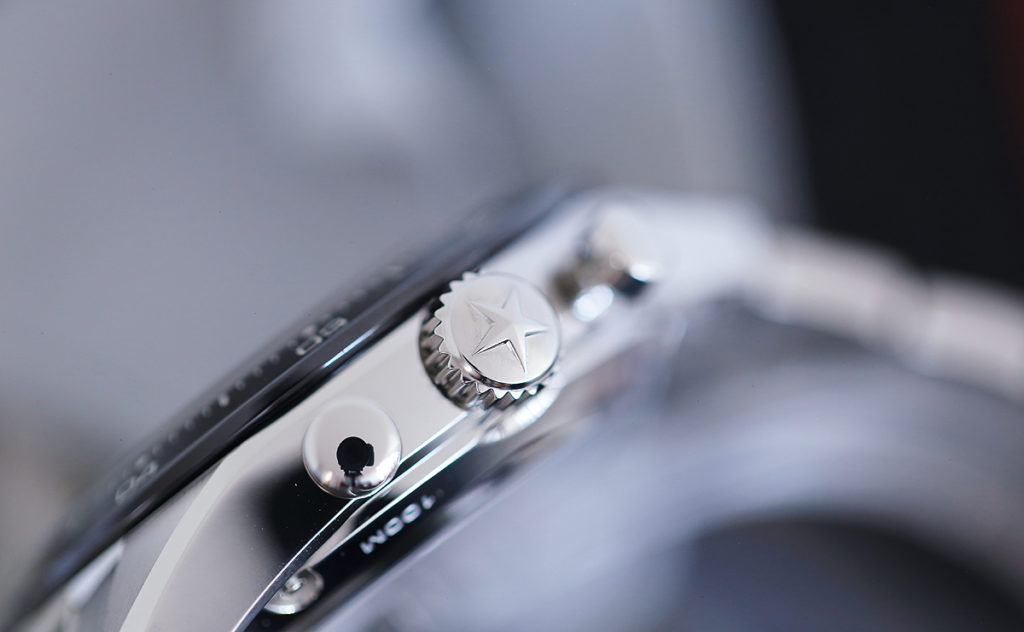
The major change on the dial side of the movement is the removal of the conveyor, which served as the clutch of the totalizer at 6 o’clock. The column wheel, an essential element both technically and visually of the El Primero architecture, has been enlarged and also repositioned to be more visible, placed along the 6 o’clock-to-12 o’clock axis. Also important from a visual standpoint are the changes to the lateral clutch, which now integrates two intermediate wheels rather than the previous single one (a patented design); meanwhile, the wheel mounted on the axis of the second wheel in the El Primero 400 has been removed.
Enhancements to the chronograph’s timing abilities also derive from the wheels’ improved teeth design. Each individual wheel has its own specific tooth shape, in fact, designed from a computer-based algorithm, which substantially upgrades the torque of the gear train. In that mechanism’s new design, the chronograph’s energy comes from the escapement wheel rather than the second wheel, as it would in a foudroyante, or jumping seconds complication. Visually, this manifests itself in the central chronograph seconds hand making a complete rotation around the dial every 10 seconds but divided into exactly 100 positions, enabling the wearer to read elapsed times to 1/10th second directly on the bezel.
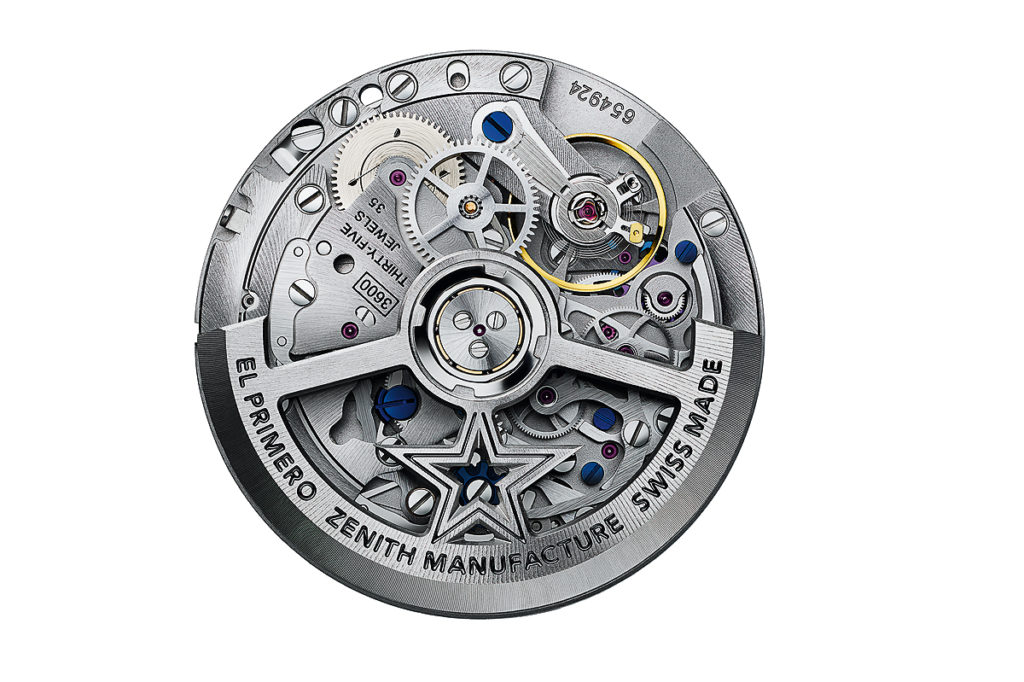
The movement, on display behind a sapphire caseback, is constructed to visually highlight the enlarged blue column wheel and lever-operated lateral clutch as well as the openworked rotor shaped like the Zenith star emblem. The interactions between the column wheel and the various levers, as well as with the beak of the lateral clutch, are particularly highlighted. This ultra-modern caliber is equipped with a stop-seconds function, and stores 60 hours of power reserve — 10 hours more than the standard El Primero Caliber 400.
Zenith fans and collectors may recall the “prototype” version of the Chronomaster Sport, dubbed “Chronomaster 2.0,” which debuted as a limited edition in 2019, one of three that comprised a “past-present-future” set released in early 2019 for El Primero’s 50th anniversary year. This new collection represents a visual and technical streamlining of that piece, with a more prominent ceramic bezel and a slimmed down case size, from 42 mm to 41 mm. The date display, which migrated to 6 o’clock on the lim- ited edition, has returned to its traditional 4:30 spot on the Chronomaster Sport.
Both the black-dial model that we reviewed and the white-dial model are available on a new integrated steel bracelet, built to resemble the historical Gay Frères bracelets found on Zenith models of the 1960s; and on a textured cordura-effect rubber strap. The watch is priced at $10,000 on the bracelet and $9,500 on the strap.
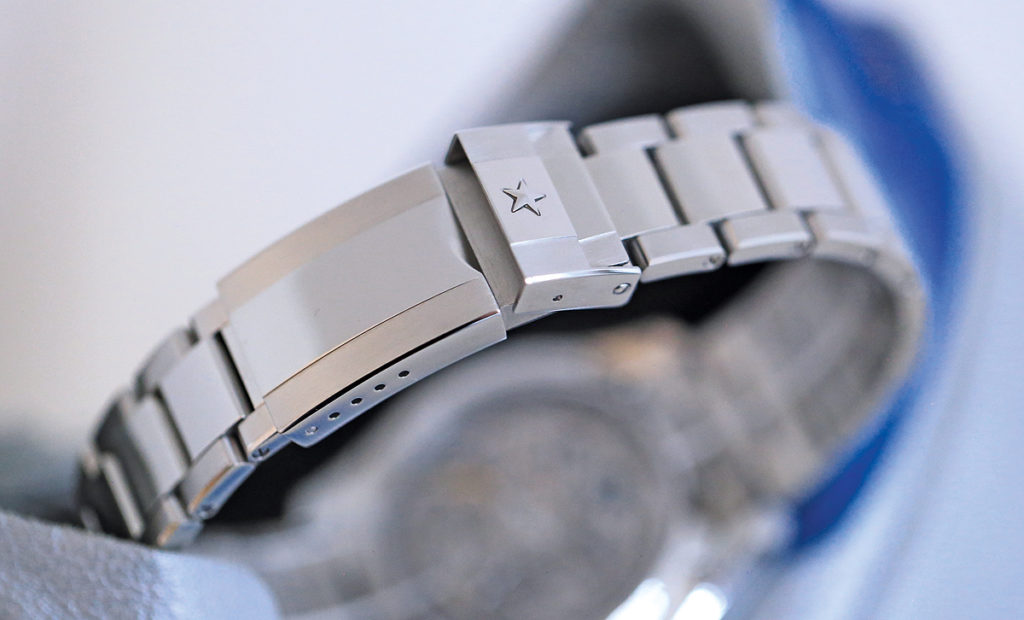
The ceramic bezel, tricompax dial, pump pushers and distinctive three-link bracelet have already brought comparisons to another, more venerated chronograph watch, Rolex’s Cosmograph Daytona. But should the Chronomaster Sport really be pigeonholed as a “me-too” Daytona? We’d argue that the familiar tricolor subdials, first-of-its-kind 1/10th-second bezel scale, and correspondingly speedy central hand with star counterweight definitively impart to this model an identity of its own. Lest we forget, it was Zenith’s own El Primero caliber that added value and collectability to many earlier Daytonas, so in a sense one might say that Zenith is simply capitalizing on a style that it helped make popular many decades back.
SPECS:
Manufacturer: Zenith International SA, Rue de Billodes 34-36, CH-2400 Le Locle, Switzerland
Reference number: 03.3100.3600/21.M3100
Functions: Hours and minutes in the center; small seconds at 9 o’clock; 1/10th of a second chronograph with central chronograph hand making one complete rotation in 10 seconds, 60-minute counter at 6 o’clock, and 60-second counter at 3 o’clock; date display at 4:30
Movement: El Primero 3600, automatic; frequency = 36,600 vph (5 Hz), power reserve = 60 hours; stop-seconds function; 1/10th-second chronograph with column wheel and lateral clutch
Case: Stainless steel with black ceramic bezel, grooved steel crown, pump-style chronograph pushers, domed sapphire crystal with nonreflective treatment on both sides, sapphire exhibition caseback, water resistant to 100 meters
Bracelet and clasp: Stainless-steel “Gay Frères” bracelet with double-folding steel security clasp
Dimensions: Diameter = 41 mm, height = 13.6 mm
Variations: On cordura-effect rubber strap ($9,500); with white dial on steel bracelet ($10,000) and on cordura-effect rubber strap ($9,500)
Price: $10,000

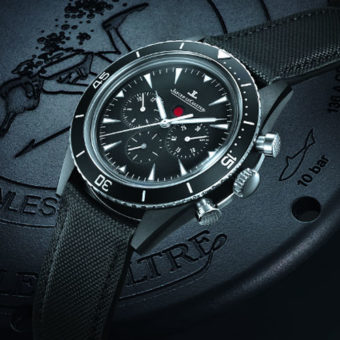
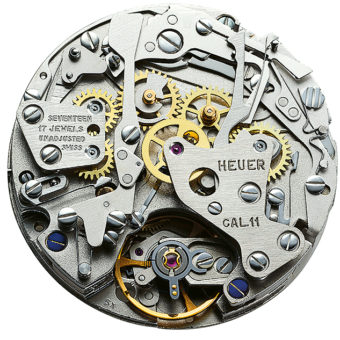
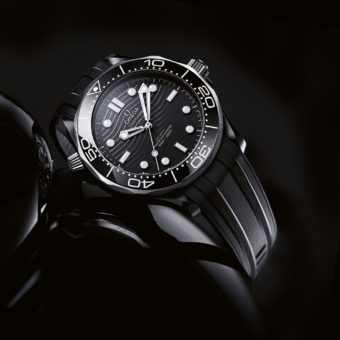
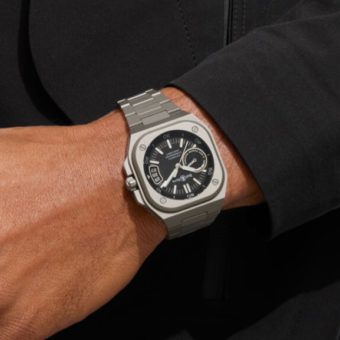
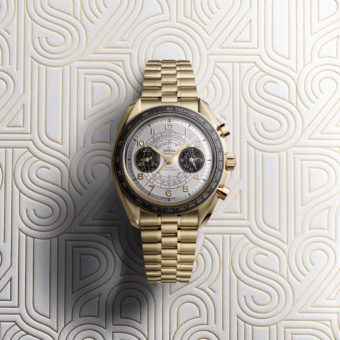
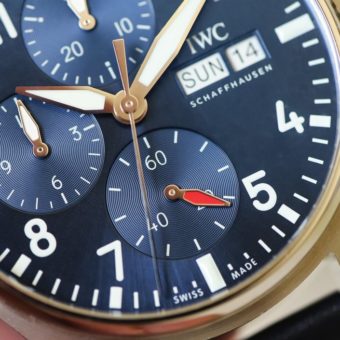
As both a Zenith chronograph and ceramic Daytona owner I feel I can be fair and objective in my comments. Zenith is generally speaking a good value and I really like the one I own. Have owned the last two stainless Daytona models and though the Daytona is only $3K more, to my mind the feel, presence and cachet of the Daytona makes it a no brainer. A friend of mine is an AD so the availability issue isn’t a consideration though that’s not reality for most Rolex enthusiasts. For me, this specific Zenith is too close to a Daytona that was “changed to be different enough” but if you can’t get a Daytona at MSRP and you can’t justify $30K+, it’s on option. Personally, I’d want the “original” for many reasons and if I couldn’t get the Daytona I’d personally rather buy a Speedy because I’d always see a Daytona wannabe when I checked the time. El Primero is a beautiful caliber to look at and was a large reason I bought mine. Been blessed to have far more wristwatches than anyone should and more often than not, I’ll put on one of my stainless Rolex’s though to be honest it’s most often a model with brushed center links. As we all know, you look at a polished center link wrong and it leaves a mark!
Great article and review, well done!
Fantastic watch. Rolex used to modify the El Primero movement and use it in their Daytona by slowing the movement and removing the date window. Still the Zenith version somehow looks like the Daytona – polished centre links, ceramic bezel – even the pushers (although not screw down)…
Is this watch COSC certified? Hours of reserve? Great looking!